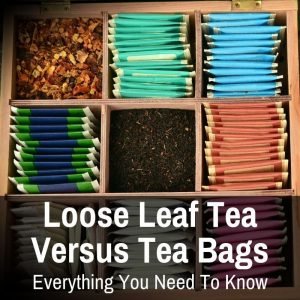
The answer is obvious, right?
I certainly know which I prefer. And I’m sure you do, too.
But the thing is: half the people you ask will prefer the opposite to you.
So it’s really not so cut and dry after all.
Both tea bags and loose leaf tea have their advantages and disadvantages.
And when you add them all up, does the balance tip one way or another?
Yes, it does, but it tips in a different direction depending on who is doing the weighing.
Let’s take a look at the pros and cons of both and see which way the balance tips for you. We’ll see whether tea bags or loose tea is the better choice for you
Table of Contents
- 1 Tea Bags Vs Loose Leaf Tea
- 2 Loose Leaf Tea Vs. Tea Bags: Final Thoughts
Tea Bags Vs Loose Leaf Tea
We’ll begin by looking at the pros and cons of tea bags and then do the same for loose tea leaves.
Advantages of Tea Bags
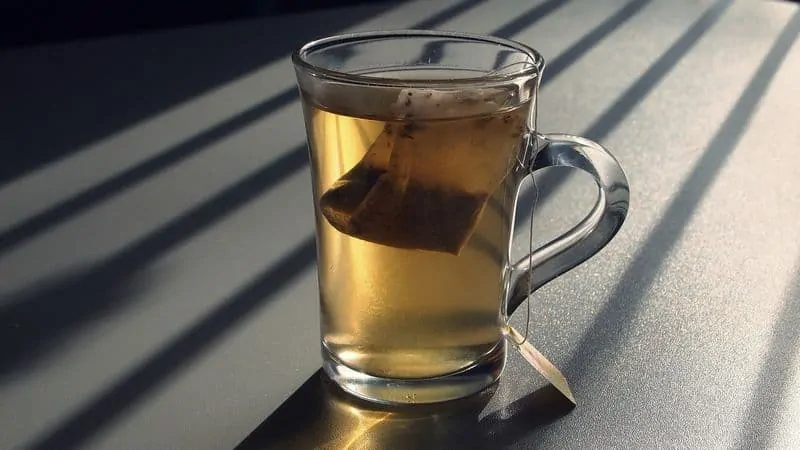
The major (and really only) pro of tea bags is their convenience. They are easier to buy, use and get rid of. Using a tea bag saves time and requires no real thought or effort. All 3 advantages are matters of convenience:
Easy to Brew
This is far and away the biggest advantage of tea bags and the primary reason they are so popular. Who wants to spend time figuring out how many leaves to use and how to keep them from floating around in your tea?
Instead, you can just dunk a bag in some boiling water and be done. It’s just so much easier! And for most casual tea drinkers, the easiness of tea bags makes them the clear choice.
Easy to Buy
Tea bags are not only easier to use, they are also easier to buy. You can get them almost anywhere and you don’t have to worry about ending up with a low quality tea, because you’re not sure which one to buy (mainly because they are all low quality, but we’ll get to that).
A number of well-known brands make tea in bags (like Lipton), so you can just grab one of those and know exactly what you’re getting. There are no surprises and you don’t have to worry about searching specialty stores to find the tea you want.
The brands listed in our article on the best luxury tea brands are also a good place to find quality tea bags. Most tend to sell the pyraid style bags.
Easy Disposal
Tea bags are easy to brew and they are easy to get rid of after brewing. Simply pull them out of the cup by the attached string and toss them in the garbage.
You can also use them for other things. For example, did you know tea bags can work to draw out an infection? Or that you can put tea bags on wounds to stop bleeding? Or use a tea bag for tooth extraction pain?
Disadvantages of Tea Bags
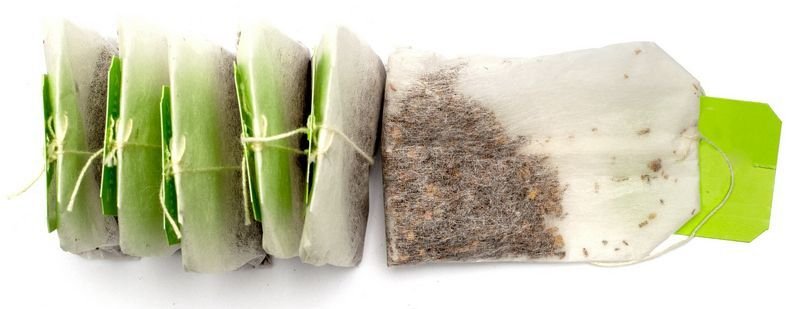
While tea bags have one major advantage, they have a number of cons, with quality issues being by far the largest and cost being a major one too. Of course, quality is not that big a deal if you add milk and sugar to your tea, which is a big reason tea bags will always be popular.
I should note that I am talking about standard tea bags here. There are now newer bags, like pyramid shaped ones, that go a long way toward fixing the major problems of tea bags. More on these premium tea bags below.
You can also make your own tea bags, which takes care of some of the disadvantages as well. If you are interested in making your own, learn how to make DIY tea bags here.
The disadvantages of standard tea bags are:
Quality
Quality is the biggest issue with bagged teas. And it isn’t just one issue. A whole bunch of problems all effect the quality of the tea.
Low quality ingredients is the first problem. Most tea bags are filled with the leftover dust and fannings from broken tea leaves. The stuff that remains after the quality leaves have been used for loose tea is what goes into the bags.
Space is another issue that impacts quality. Tea bags are too small too allow leaves space to unfurl. For that reason, they are generally filled with small leaf particles, like the dust and fannings. And that brings us to the next issue.
Tiny leaf particles lack most of the essential oils and aroma larger leaves have, so you miss out on both nutrients and flavor. They also release more tannins when brewed, which leads to more bitterness.
Some bags contain chemicals which can leech into your tea. Even without chemicals, many impart a paper flavor. The string is often attached to the bag with a little staple, which can lend a slight metallic taste to the tea as well.
The newer premium tea bags I mentioned fix all of these quality issues, though they still lag behind loose leaf tea.
Less Healthy
As a result of small leaf particles losing most essential oils, the resulting tea contains far fewer of the nutrients that make tea such a healthy drink. If you are drinking tea for the health benefits, you actually miss out on them with most tea bags.
Cost
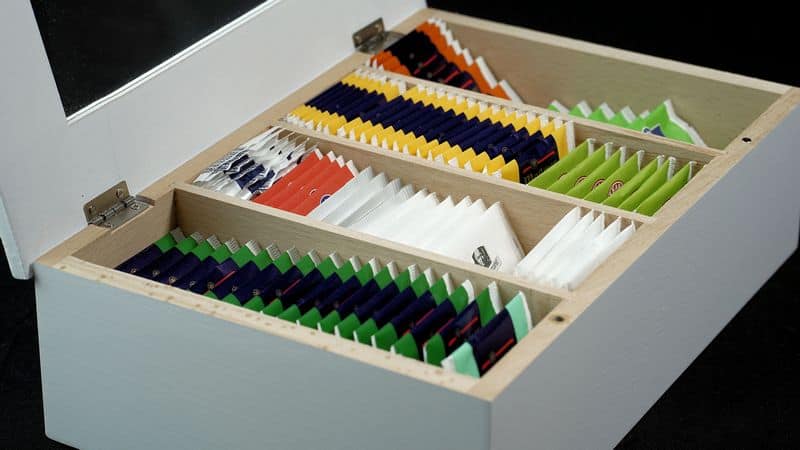
Tea bags cost far more than loose leaf tea. The premium bags that do not have the same issues with quality cost even more, making this the biggest issue for me. I don’t like paying more for something that is actually a worse product.
Comparing prices directly, it looks like tea bags are cheaper, but if you compare them by the cost per cup, the loose tea comes out on top every time.
Let’s take a look at an example.
I searched for Sencha (a Japanese green tea) on Amazon. Two of the most popular were these two: one in bag form and one in loose form.
At the time of writing, the Davidson’s tea was selling for around $18. 16 ounces gets you around 225 cups (and actually far more; see the next point below). That works out to 8 cents per cup ($18 / 225 cups).
The Harvey & Son’s tea was selling for around $9 at the time of writing. 50 bags gets you 50 cups of tea. That works out to 18 cents per cup ($9 / 50 cups).
And the difference in cost becomes much larger, when you take the next point into consideration.
One and Done
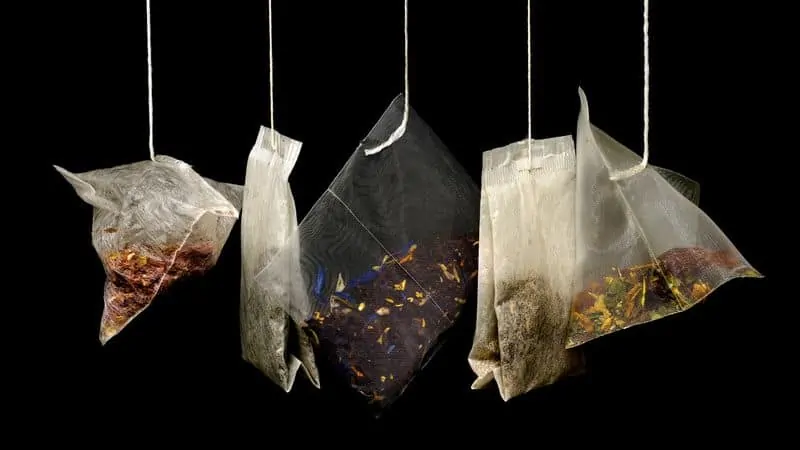
This also factors into the cost. Tea bags are made to use once and then throw away. With loose tea, you can brew the tea leaves several times (generally 3-5 times), so you get far more use out of them.
Continuing the example above, you can easily get 4 steeps out of each set of loose leaves. That increases the number of cups of the Davidson’s tea by a factor of 4, to a total of 900 cups. Now, the price per cup drops to 2 cents ($18 / 900 cups).
Mix of various leaf scraps
Regular tea bags do not contain one tea. Most contain a mix of various leaf scraps from various locations. This means you are never really getting a specific type of tea, but a generic “black tea” or “green tea”. Some premium bags have rectified this issue.
Freshness
Tea bags are industrially produced. They often sit in a warehouse and on store shelves for months, even years. Tea generally has a shelf life of around one year. After that it goes stale.
Environmental Impact
Disposing of a tea bag, complete with metal staple, after every use will obviously impact the environment. Some premium tea bags are now biodegradable, which goes a long way toward reducing the environmental impact. You can also reuse used tea bags.
Advantages of Loose Leaf Tea
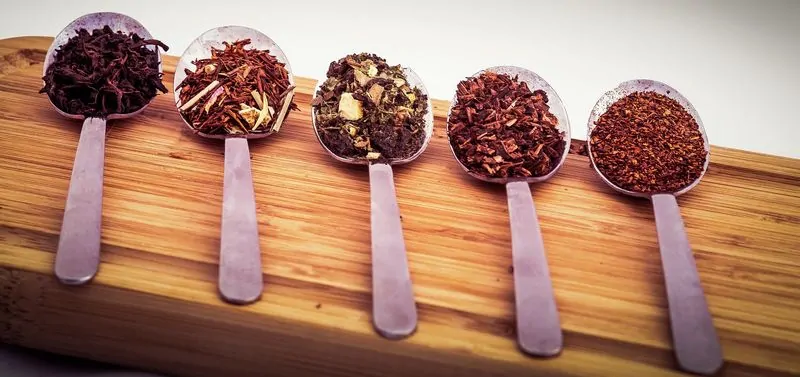
Just like the major cons of bags are quality and cost, those two factors are the main pros of loose tea.
Quality
The number one reason to drink loose leaf tea is quality. Even low quality leaves are better than anything you’ll find in any standard tea bag, and good quality tea leaves are a revelation. If you’re used to drinking tea made from bags, you’ll be shocked at the difference.
Having the whole leaf intact (or large parts of the leaf, at least) allows the full flavor profile of the tea to be released. It also retains the essential oils that release tea’s nutrients into your cup.
Most loose tea you buy (apart from the cheapest ones that are usually blends) is made up of all the same leaves. If you buy a Dragon Well green tea, for example, you get only Dragon Well leaves, not a mix of a whole bunch of different teas. As a result you get to taste the unique flavor profile of one single type of tea.
Cost
Cost is the other big factor. I already covered this extensively above in the disadvantages section for the bagged tea. This article goes into much more detail on the cost comparison.
Multiple Steeps
This was mentioned above as well. You can steep loose leaves multiple time (generally 3-5, though I often get 6 or 7 out of some of my teas). This greatly reduces the cost of your tea and also has another wonderful benefit.
The flavor profile of the tea changes slightly from one steep to the next, so you get to enjoy several different variations of your tea. And usually, the first steep is not the best one. I always enjoy steeps 2 and 3 the most.
Ritual
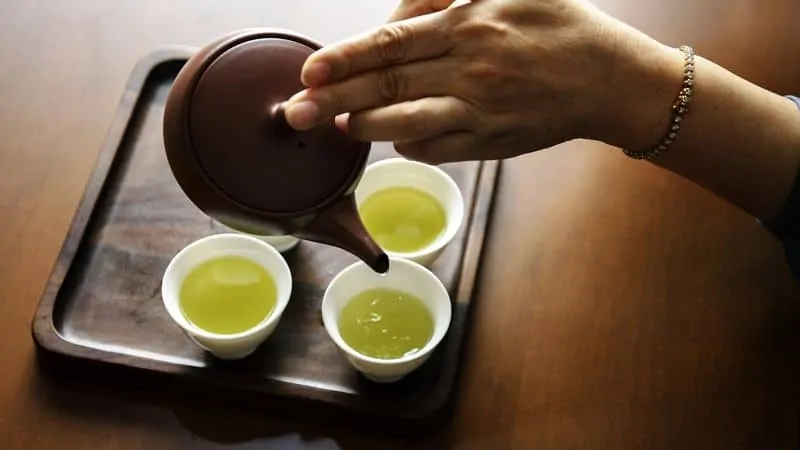
Many consider the ritual of steeping tea relaxing in and of itself. For some this would be a clear disadvantage, due to the time it takes, but others actually enjoy the process of steeping their tea. This is especially true for those who follow a ritualistic tea ceremony or a traditional brewing style, like the Chinese gongfu style of brewing.
Freshness
Loose leaf tea is usually freshly packed and sealed to keep in that freshness, and then quickly brought to market. Bagged tea, on the other hand, can spend a long time sitting in a warehouse or on shelves.
Retain Tea’s Health Benefits
This was already touched on in the quality section, but deserves its own section as well. When the leaves stay intact (or mostly intact, since many loose teas are chopped up leaves, but not finely chopped), they retain all their essential oils.
When you steep larger leaves, those oils and the vitamins and minerals they contain are released into your cup. When you use bagged tea, you lose many of tea’s health benefits.
Disadvantages Of Loose Leaf Tea
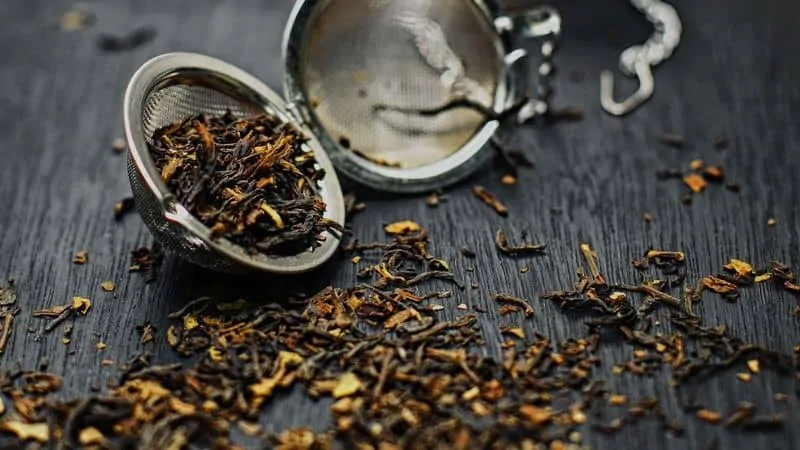
The cons of loose leaf tea all have to do with convenience and that is the main reason so many people opt for bags. Loose tea is clearly better, but convenience trumps all, for many in today’s fast-paced world.
More Difficult to Brew
Loose tea is more difficult to prepare, no doubt about it. While you can brew some teas directly in the vessel and drink them with the leaves still inside, that does not work for all. And many people prefer not to do that, even when they can.
That means you need some kind of strainer to keep the leaves out of your cup.
Then you also need to think about the amount of leaves you need, the temperature of the water (you only want boiling water for black tea or pu’er tea, not the others) and the steeping time.
It’s a lot to think about, so many don’t and just go with bags.
But it’s not as complicated as it seems and you can get a simple strainer for a few dollars at most.
If you already know which vessel you need, I have review pages for all of them: teapots with included infusers, travel mugs, tea mugs with infuser, and just tea infuser baskets or balls on their own (to fit into any mug you already have). Or you can go all out and get one of these best tea sets.
Disposal
This is actually my least favorite aspect of loose tea. I hate cleaning the leaves out of the strainer and putting them in the trash. To be fair, it takes me less than a minute, but I still hate it.
If you have a garbage disposal, this task becomes a lot simpler, though. You can just rinse out the strainer and let the leaves go into the disposal. No need to keep them out of the drain in that case.
Availability
Loose leaf tea is much harder to come by in most parts of the world. Unless you live in China or Japan, you can’t just go to any store and buy loose tea. Sure, they may have some, but they are usually not good varieties.
Instead, you’ll have to head to a specialty tea store. At least that used to be the case. Nowadays, there are hundreds of online shops that will deliver great loose teas anywhere in the world, including Amazon.
All the tea pages on this site (you can find them here) give recommendations for the best quality and best value teas you can get from several stores, including Amazon.
You can also check out this reviewing and comparing my favorite online tea vendors.
Which Do Serious Tea Drinkers Prefer?
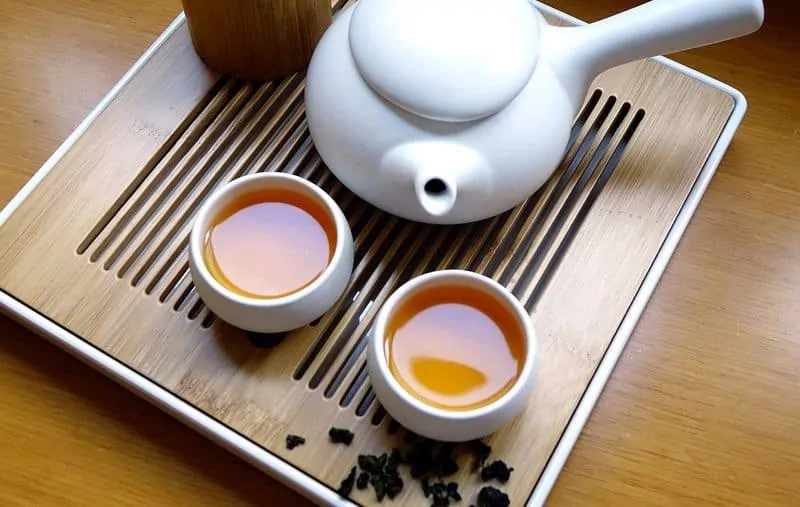
Almost all serious tea drinkers prefer loose leaf teas to bagged varieties and most avoid tea bags whenever they can.
Similarly, if you go to a tea drinking country like Japan or China and you will rarely be served a cup of tea that has been brewed using a bag.
If you want to drink tea, but want it to be a simple as possible, bags make sense. They also make sense if you’re going to add sugar and milk to your tea.
But if you want to enjoy the full flavor profile of tea and also the full health benefits, you need to get loose tea leaves.
That said, you can get much closer to loose tea with some of today’s premium tea bags. The most effective and most common among them is the pyramid bag.
Premium Pyramid Bag Recommendations
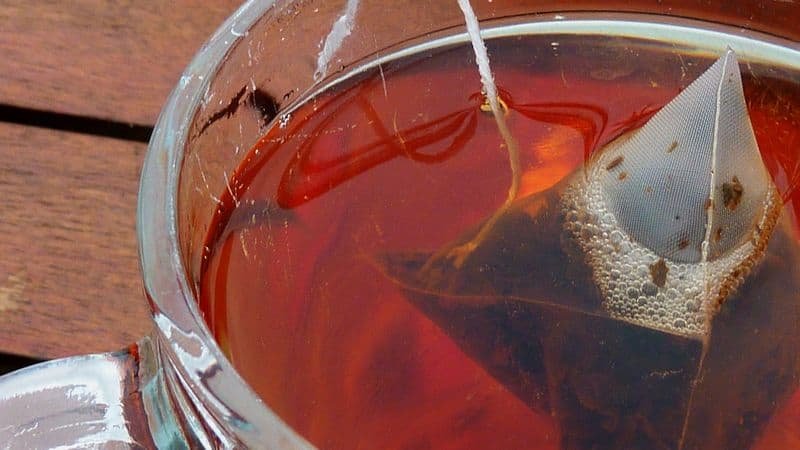
If you want to get more out of your tea, but want to continue to enjoy the ease and convenience of bags, pyramid bags are the solution for you.
- Tealyra has a good selection of high quality teas in pyramid bags. You can see those here on Amazon.
- Tea Forté sell this wonderful sampler pack that lets you try 10 different teas in pyramid bags.
These bags are a huge improvement over the standard ones, but they still can’t come close to actual loose tea leaves. If you’d like to give loose tea a try, here are some recommendations to get you started.
Loose Leaf Tea Recommendations
If you’ve decided that you would like to try loose leaf tea, but are not sure what to get, here are my recommendations for the various types of tea:
- Green Tea: for a full-on green tea flavor, go with the Japanese Sencha; for a milder flavor, go with the Chinese Dragon Well
- Black Tea: my favorite is the Golden Monkey; for a stronger, smokey black tea, try Lapsang Souchong (note: you may be thinking of Darjeeling, but it is technically an oolong, not a black tea; either way, a good Darjeeling is wonderful though and certainly worth trying)
- Oolong: my favorite is Big Red Robe tea, which is a dark oolong; for a lighter and milder oolong, try Iron Goddess tea, which is also the most popular variety in China
- White Tea: the highest quality white tea is White Hair Silver Needle, but many people actually prefer the fruitier flavor of White Peony, which is much cheaper
- The final two options are Pu’er tea and yellow tea, both of which are wonderful, but not ones I would recommend for a beginner.
Loose Leaf Tea Vs. Tea Bags: Final Thoughts
Loose leaf tea beats out bagged tea by a lot when it comes to flavor. It is also better in terms of health benefits. But it is less convenient.
Brewing loose leaf tea takes longer and is more involved. With tea bags you only need to put the bag in boiling water. If convenience and portability are most important, than tea bags are the way to go.
I really appreciated your article. It was an eye opener; it made a lot of sense.
I drink quite a bit of bagged tea. I am actually excited to to try leaf tea after my next trip to town.
I grew some chocolate mint tea this year and have quite a bit drying, I’m looking forward to that, as well.
A friend of mine, that know I drink a lot of tea, asked me why I only make it by the cup. He asked: “Why not use either a percolator coffee pot or a coffee maker?” I told him: “Because you just don’t.”
The fact is, I don’t know why. Can you, please, tell me the pros and cons of using either a stainless steel percolator coffee pot or a coffee maker to brew tea in?
Thank you, very much…Jon
I don’t really know much about coffee makers (and have no idea what a percolator coffee pot is). But it seems like you can’t control the water temperature or the steeping time in a coffee maker and that isn’t ideal for tea.
I agree that loose tea leaves have a good amount of freshness in them which makes them a good choice. I plan to start buying wholesale tea leaves soon because I’m trying to quit drinking too much coffee. Switching to drinking tea will still give me the caffeine fix that I need but to a lesser extent.
I have a question. On some teas (Lipton green varieties), I have noticed soy lecithin as an ingredient; why? Is there a purpose or need for it?
I don’t know why that’s in there, but I wouldn’t buy any tea that has ingredients other than tea (or perhaps herbs, fruits or other natural ingredients).
I started drinking loose leaf tea last year after learning that many tea bags are made with plastic that can leach into the tea. The fancy pyramidal tea bags are literally made out of plastic, but I doubt that occasional use will do any harm. I got a fancy electric kettle as a gift over the holidays, and now I can actually get consistently 200 or 160 degree water. The easiest way to brew it for me has been diffuser baskets that give the tea plenty of space while sitting in one of my mugs. When I’m done, the spent leaves can go in my compost as is.
This is what I do, too. Infuser baskets either in the mug or in a teapot (I usually go with the teapot). It’s simple and you can reuse the leaves a bunch of times. I generally get 3-6 infusions out of them.
According to another site, tea bags are better for your health:
“Loose leaf may contain more bioactives because they use higher quality leaves. But leaves in teabags are cut smaller, and this is thought to enhance the extraction process. Lower quality teas may also include more stems, which are higher in L-theanine than the leaves. So while fancy loose leaf might taste better, you probably get more bang for buck from a humble tea bag.”
https://www.sbs.com.au/food/article/2017/04/18/are-tea-bags-better-loose-leaf-tea
Interesting theory. Haven’t heard that one before.